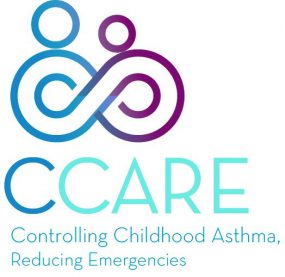Controlling Childhood Asthma and Reducing Emergencies (CCARE)

What is CCARE?
CCARE, Controlling Childhood Asthma and Reducing Emergencies, is CDC’s new objective of preventing 500,000 Emergency Department (ED) visits and hospitalizations due to asthma by August 31, 2024.
Why is CCARE needed?
About 6 million children in the US ages 0-17 years have asthma. More than half of all children with asthma had 1 or more asthma attacks in 2016. Every year, 1 in 6 children with asthma visits the ED and about 1 in 20 children with asthma are hospitalized for asthma.
What will CDC do?
CDC’s National Asthma Control Program (NACP) will lead a multi-agency group of federal and state, territorial and local partners, medical professional organizations, non-governmental organizations, school health organizations, health insurers and providers, and others who help children with asthma in this nationwide effort.
We will work to increase coordination among these partners and to encourage partners who provide evidence-based interventions, outlined in CDC’s “EXHALE” technical package, to expand their work to reach more children. We will also support partners who are working to develop policies that will improve access to quality care and lower the cost of asthma care for children.
How will we track progress?
Starting September 1, 2019, CDC will use CDC and partner data to track our progress in reaching interim targets on the way to reaching our final objective. Children who visit the ED or urgent care, or who are hospitalized, are children whose asthma is not well-controlled. By tracking reductions in these visits and hospitalizations we can track improvements in the health of children with asthma.
What does the CDC NACP do?
CDC’s NACP works to help Americans with asthma achieve better health and improved quality of life. The program funds states, territories, cities, school programs, and non-government organizations to help them improve surveillance of asthma, train health professionals, educate individuals with asthma and their families, and explain asthma to the public.